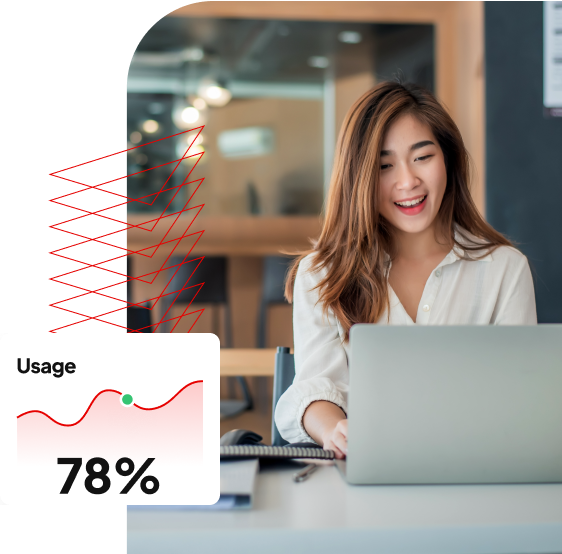If you think about it, how many hours do you spend daily on your smartphone or computer? Super realistic video games, Facebook, AR/VR, things like that seem straight up taken from a Sci-Fi movie. But if you take a closer look at how basic things work, you’ll see that this is not that outlandish at all.
We go through our days surrounded by them and enjoy their non stop availability. That’s because what you experience, and what’s behind the curtains, have something in common, and that’s the term ‘virtual’.
‘Virtual’ is standard, it’s just another day that ends in Y, and that’s equally valid for IP addresses. Ever heard of virtual IPs? Well, they embody the idea of virtuality in networking. And though they do not literally exist, they… Exist… And they help you enjoy your favorite online service or website almost seamlessly.
What is a virtual IP address?
A virtual IP address (VIP, literally) is a type of IP address that does not correspond to a physical device. Instead, it is used for network services such as load balancing, one of the main use cases for a VIP.
A virtual IP address is a way for multiple devices to share a single IP address, among other clever methods, such as the NAT protocol.
VIP addresses help in situations where multiple servers are operating for the same service, such as a website. And for that, you want to ensure that if one server fails, the others can take over and maintain the availability of the service. And that’s how the virtual IP address steps into the spotlight.
In this setup, a load balancer is used to distribute incoming traffic to the servers, and the virtual IP address is assigned to the load balancer. The load balancer then uses the virtual IP address as its own IP address, and the servers use their own unique IP addresses behind the scenes.
How does a virtual IP address work?
A virtual IP address (VIP) works by using a load balancer to distribute incoming traffic to multiple servers. The load balancer will get the VIP, which acts as the balancer’s IP address.
But for us to understand how these pieces fit into the grander scheme, let’s first understand what a load balancer is.
If you study the name itself, you’ll probably think it has something to do with the load of information or traffic and how it is distributed for more efficiency.
And in this case, you were right. A load balancer is a device or software that sits between clients and servers in a network. distributes incoming traffic across multiple servers to ensure that the load is balanced and network services remain available.
This synergy is a great help for services that have multiple servers. In this way, if one server fails, the other can take over and keep the service available, ensuring little to no downtime. Here’s how this dynamic works, in a few steps:
- Traffic is sent to the virtual IP: When a client/user wants to access a network service, such as a website, it sends a request to the VIP.
- The load balancer distributes the traffic: It receives the request and distributes it to one of the servers behind it.
- Server handles the request: The selected server processes the request and sends a response back to the client, but first it has to pass through the load balancer.
- Load balancer forwards the response: The load balancer receives the response from the server and forwards it back to the client.
Additionally, the load balancer can use various algorithms to determine which server to send each request to, ensuring that the load is distributed evenly among the servers.
What are the main use cases for a virtual IP address?
Improving reliability and availability of network services is what makes virtual IP addresses so versatile and interesting. Just like any other clever networking mechanisms, VIPs suit different scenarios, many of which make up the backbone of the modern online world. Here are the most common use cases that underline VIPs’ importance.
Load balancing
One of the main use cases for virtual IP addresses. As we saw earlier, VIPs are used with load balancers to split incoming network traffic. The traffic is distributed to multiple servers to make sure that network services remain available if a server goes down. It is both a precautionary measure and a way of improving reliability.
The need for high availability
A natural follow up to the advantages of VIPs and load balancers. Using such addresses results in high uptime of network services. When and if a server fails, the traffic can be taken by another server without interruption.
It might help you to think of this process as the emergency electrical generators. When the main grid happens to go down, there’s always an emergency generator that’s able to keep things up and running.
Network simplification
By using a single VIP as the entry point to a group of servers, network administrators can simplify the network configuration and reduce the number of IP addresses needed.
So, not only does it make networking easier, but it also contributes to a healthier online ecosystem. And considering the fact that IPv4 addresses are becoming scarcer and scarcer, avoiding overusing them is a pretty clever idea.
Centralizing management
Virtual IP addresses + Load Balancers = Better Network Management.
Administrators can centralize the management of network services, making it easier to update and maintain the services.
Security
VIPs can also be used to provide an extra layer of security. They hide the actual IP addresses of the servers behind the VIP, making it more difficult for attackers to target individual servers.
That’s just one of the awesome things technology can do. Even though it might sound simple in theory, things like VIPs, alongside proxies and VPNs, are necessary in keeping you safe online.
Scalability
Virtual IPs can come in handy for scaling network services. Administrators and engineers can add or remove servers as needed, without having to change the IP address or reconfigure the network.
That’s highly important for maintaining a clean, efficient, and reliable online infrastructure. With the Internet having grown so much over the past decades, billions of devices are connected to the Web 24/7.
Key services need carefully maintained networks and an uninterrupted flow of information. So, by using a virtual IP address, administrators and engineers can tinker with networks without hindering the ‘neighbors’.
Conclusion
‘Virtual’ has become the 21st century’s anthem. Wherever you look, you encounter apps, services and devices that base their functionality on the concept of virtual.
The Matrix happened in 1999, but we still have a long road ahead of us until we’ll have to deal with super intelligent machines and alternate worlds. Until then, virtual things like IP addresses help us stay online and keep the World Wide Web running.
A virtual IP is a useful tool for improving the reliability and availability of network services. It works by using a load balancer to distribute incoming traffic to multiple servers. The flow of traffic thus becomes more efficient, and the reliability of such an IP address ensures your favorite website stays on even if one of its servers goes south.
The beauty of VIPs is that they can be assigned, moved, and reassigned dynamically, depending on the needs of the network. With their ability to create a virtual network that operates seamlessly behind the scenes, VIPs are a shining example of the power of virtuality in networking.






